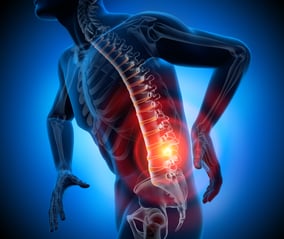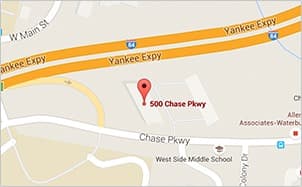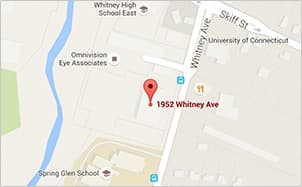Back pain is one of the most common reasons people see a doctor or miss days from work. More than 30% of US adults report having experienced low back pain in the last 3 months. The lower back is where most back pain occurs. Back pain can be classified as acute or chronic. Acute pain lasts a few days to a few weeks. Chronic pain lasts longer than 12 weeks. About 20 percent of people affected by acute lower back pain develop chronic back pain symptoms at one year from the onset of symptoms. This does not necessarily mean there is an underlying serious condition causing the pain. Often times, back pain causes are difficult to identify and treat.
What are Causes of Low Back Pain?
To better understand the causes of low back pain, it is useful to discuss the normal anatomy of the lower back. The lower back is made up of 5 lumbar vertebrae. These vertebrae support most of the weight of the upper body. In between the vertebrae are rubbery pads called intervertebral discs. These help to cushion the bones as the body moves. Ligaments are bands of tissue that hold the vertebrae in place and tendons attach the muscles to the spinal column. Thirty one pairs of nerves are rooted to the spinal cord.
Low back pain causes can be categorized into 3 groups: non-specific back pain without radiculopathy (radiation), low back pain with radicular symptoms or secondary back pain due to a spinal cause. Non-specific causes are likely due to sprains and strains of the ligaments and musculature. This makes up about 70% of back pain causes. Mechanical causes make up almost the remainder of the back pain causes. These include degenerative changes in the discs, disc herniations, fractures and spinal stenosis. These mechanical causes can have nerve related symptoms (radiculopathy) or not. The nerve symptoms are typically described as a burning, shooting pain that can run down one or both legs. There also are causes of back pain not related to the spine like kidney stones or urinary tract infections. These are examples of referred pain and do not make up a large percentage of chronic back pain.
How Can it be Diagnosed?
.jpg?width=275&name=Low%20Back%20Pain%202%20(002).jpg) Back pain is typically diagnosed with a focused history and physical exam. Imagining is not often needed. X-rays are used to detect fractures and issues with the vertebrae. MRI can be used to evaluate bones and soft tissues. This is helpful in diagnosing disc herniations, and nerve disorders.
Back pain is typically diagnosed with a focused history and physical exam. Imagining is not often needed. X-rays are used to detect fractures and issues with the vertebrae. MRI can be used to evaluate bones and soft tissues. This is helpful in diagnosing disc herniations, and nerve disorders.
What Does Treatment for Back Pain Look Like?
Back pain is treated in a stepwise approach. This starts with low-cost non-invasive treatments first; then more aggressive treatments are considered if no improvement. The first step in treatment is self care and medications. Hot and cold packs, back strengthening exercises are recommended for those with chronic back pain. Medications include Tylenol, NSAIDs, muscle relaxers to help ease the pain. The second step involves complementary and alternative techniques. This is usually physical therapy, acupuncture, chiropractors and spinal injections. The third step includes surgery if deemed a candidate. Surgery does not always improve back pain, therefore, it is kept as a last resort for those whom other methods did not succeed.
Are There Clinical Trials for Back Pain?
Because chronic pain is such a widespread issue, there are frequently clinical trials targeting pain relief for such individuals. If you would like more information about our back pain trial or any other trials please call us to find out more.
References:
- Herndon, Christopher M., et al. “Common Questions about Chronic Low Back Pain.” American Family Physician, 15 May 2015, https://www.aafp.org/afp/2015/0515/p708.html.
- Last, Allen R., and Karen Hulbert. “Chronic Low Back Pain: Evaluation and Management.” American Family Physician, 15 June 2009, https://www.aafp.org/afp/2009/0615/p1067.html.
- “Low Back Pain Fact Sheet.” National Institute of Neurological Disorders and Stroke, U.S. Department of Health and Human Services, https://www.ninds.nih.gov/Disorders/Patient-Caregiver-Education/Fact-Sheets/Low-Back-Pain-Fact-Sheet.
- Schenk, Ron, et al. “The Relationship between Quebec Task Force Classification and Outcome in Patients with Low Back Pain Treated through Mechanical Diagnosis and Therapy.” The Journal of Manual & Manipulative Therapy, Taylor & Francis, Feb. 2016, https://www.ncbi.nlm.nih.gov/pmc/articles/PMC4870037/.
Share This Post
Recent Posts
- The Relationship Between Obesity and Obstructive Sleep Apnea December 17 2021
- Cardiovascular Outcome Clinical Trials December 17 2021
- Diabetic Peripheral Neuropathic Pain December 17 2021
- Are All Types of Cholesterol Bad? December 17 2021
- Blood Pressure: The Highs, the Lows, and Everything in Between December 17 2021
Categories
- Clinical Trials
- Cardiovascular Disease
- Diabetes
- Obesity
- Kidney Disease
- Hypertension
- Pain Management
- Vaccine
- Cholesterol
- Chronic Obstructive Pulmonary Disease
- Diabetic Peripheral Neuropathy
- Migraine
- Osteoarthritis
- Biologics
- COVID-19
- Gastroesophageal Reflux Disease
- Irritable Bowel Syndrome with Constipation
- Lyme Disease
- Nonalcoholic Steatohepatitis
- Respiratory Syncytial Virus



